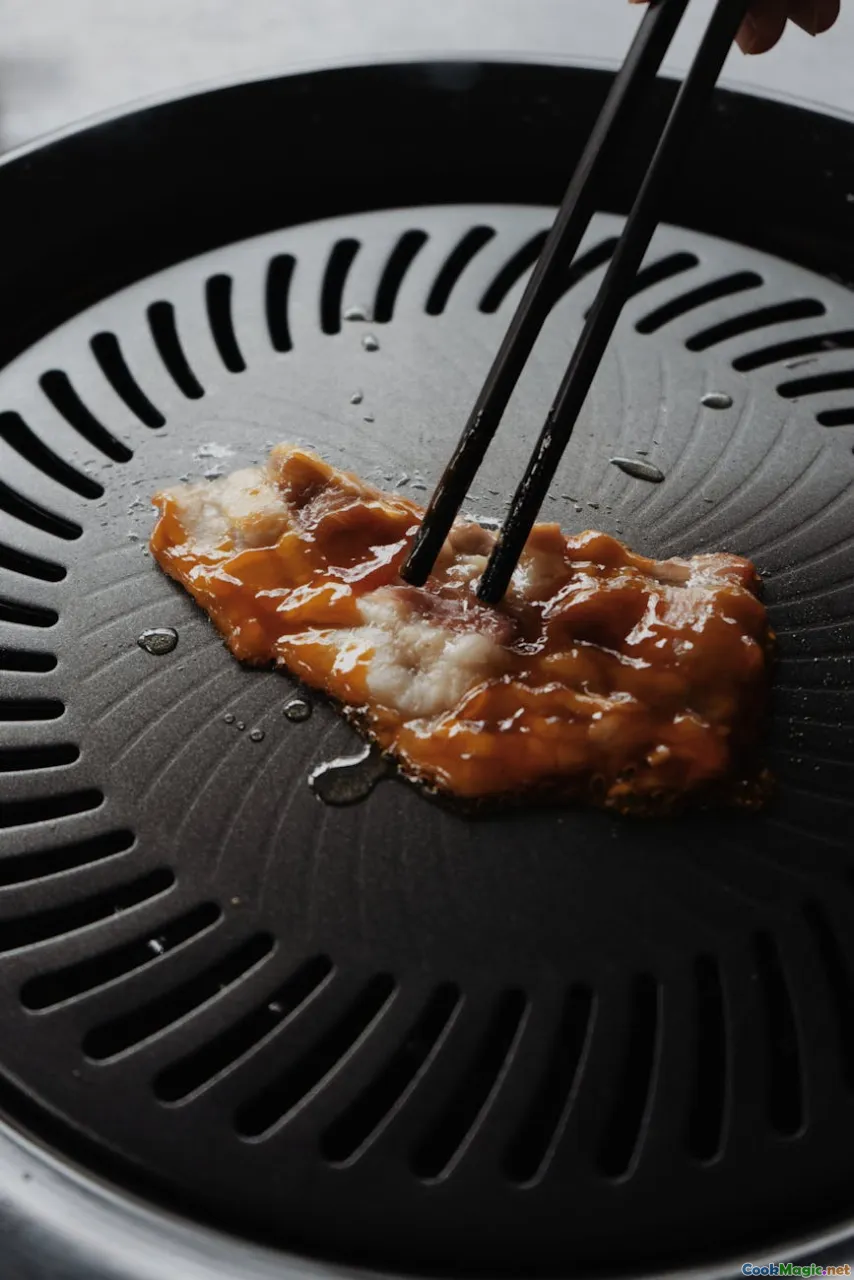Exploring the Secrets of Korean Barbecue at Home
8 min read Discover how to recreate authentic Korean barbecue at home with tips on marinades, grilling, and cultural insights for an immersive experience. April 28, 2025 07:55
Exploring the Secrets of Korean Barbecue at Home
Imagine the tantalizing aroma of sizzling meat, the smoky scent of charred edges, and the vibrant colors of marinated vegetables—Korean barbecue is a sensory celebration that brings people together. For many, it’s more than just a meal; it’s a cultural experience, a social ritual, and a culinary art form. While dining at a specialized Korean barbecue restaurant offers a vibrant, communal atmosphere, bringing this experience home can be equally rewarding—and surprisingly accessible.
In this article, we will delve into the rich history and cultural significance of Korean barbecue, explore the essential techniques and ingredients needed to master it at home, and share personal insights to help you create an authentic, mouthwatering experience for your family and friends.
The Cultural and Historical Significance of Korean Barbecue
Korean barbecue, known locally as gogigui (meaning "meat roast"), is deeply rooted in Korea’s history and social fabric. Traditionally enjoyed during celebrations, family gatherings, and communal feasts, it symbolizes togetherness and shared joy. Historically, Korea’s regional variations and centuries-old techniques have shaped the diverse styles of barbecue we see today.
From the bustling streets of Seoul to the rural villages, grilling meat over open flames or charcoal has been a staple, often accompanied by an array of banchan (side dishes), rice, and dipping sauces. The act of grilling together fosters connection—an experience that transcends mere nourishment.
Today, Korean barbecue has gained global popularity, appreciated for its bold flavors, interactive dining style, and healthful preparation methods. Learning to prepare it at home allows you to connect with this vibrant culinary tradition and customize it to your palate.
Essential Elements of Korean Barbecue
1. Selecting the Right Meat
The foundation of authentic Korean barbecue lies in the quality and cut of the meat. Popular choices include:
- Beef: Galbi (short ribs), bulgogi (thinly sliced marinated beef), and brisket.
- Pork: Samgyeopsal (pork belly), pork shoulder, and marinated pork cuts.
- Chicken: Often grilled plain or with spicy seasonings.
Look for well-marbled cuts with a balance of fat and lean meat, as this ensures tenderness and flavor. When shopping, opt for high-quality, fresh meat—preferably from trusted butchers or specialty stores.
2. Marinades and Seasonings
Marination is the secret to achieving the signature umami and depth of flavor. Typical ingredients include:
- Soy sauce: For saltiness and umami.
- Sugar or honey: Adds a subtle sweetness.
- Garlic and ginger: Aromatic and pungent.
- Sesame oil: Nutty aroma and richness.
- Rice wine or soju: For tenderization.
- Asian pear or apple puree: Natural tenderizers that add subtle sweetness.
A classic bulgogi marinade combines soy, sugar, garlic, sesame oil, and grated pear, creating a glossy, flavorful coat that caramelizes beautifully on the grill.
3. Equipment and Tools
- Grill: A tabletop charcoal or gas grill mimics the authentic experience. For indoor grilling, a portable electric grill or cast-iron skillet works well.
- Grill Tongs and Scissors: For flipping and cutting meat.
- Dipping Sauces and Banchan: Serve with ssamjang (spicy fermented soybean paste), sesame oil with salt and pepper, kimchi, and fresh vegetables.
4. Side Dishes and Accompaniments
Korean barbecue is incomplete without vibrant side dishes. Popular options include:
- Kimchi
- Pickled radish
- Lettuce and perilla leaves for wrapping
- Sliced garlic and green chili peppers
- Steamed rice
These elements enhance the flavor experience and provide a refreshing contrast to the savory grilled meats.
Step-by-Step Guide to Making Korean Barbecue at Home
Step 1: Preparing the Meat
- Marinate your chosen cuts in a prepared marinade for at least 30 minutes; overnight for deeper flavor.
- For galbi, consider marinating for 2-3 hours or overnight to tenderize and infuse flavor.
Step 2: Setting Up Your Grill
- Preheat your grill to a high temperature.
- For charcoal grilling, light the charcoal and let it ash over for even heat.
- For gas or electric grills, ensure the grates are clean and hot.
Step 3: Grilling
- Place meat slices or ribs on the grill.
- Cook until they develop a beautiful char—usually 2-3 minutes per side for thin cuts, longer for thicker pieces.
- Use scissors to cut larger pieces into bite-sized portions for easier eating.
Step 4: Serving
- Arrange grilled meat on a platter.
- Serve immediately with side dishes, dipping sauces, and fresh lettuce or perilla leaves.
- Encourage everyone to assemble their own wraps, adding garlic, kimchi, and sauces for personalized flavor.
Personal Tips and Insights
When I first attempted Korean barbecue at home, I was struck by how accessible and rewarding it was. The key lies in preparation: marinate your meat ahead of time, set up your grill in a well-ventilated area, and embrace the interactive aspect of grilling together.
One memorable evening involved friends gathering around a small table, each with a plate of marinated beef, pork belly, and an assortment of vegetables. The air was filled with aroma, laughter, and the satisfying sizzle of meat on the grill. We wrapped slices in lettuce with a dollop of ssamjang, experiencing firsthand the harmony of textures and flavors.
Creating an authentic Korean barbecue experience at home isn’t just about the food—it's about fostering connection, sharing stories, and making memories around the grill.
Final Thoughts
Mastering Korean barbecue at home is a culinary adventure that rewards patience, curiosity, and a love for bold flavors. With quality ingredients, proper marinades, and a hot grill, you can recreate the magic of Korea’s most beloved grilling tradition. So gather your loved ones, fire up the grill, and embark on a flavorful journey that celebrates community, culture, and the art of perfectly grilled meat.
Happy grilling!









